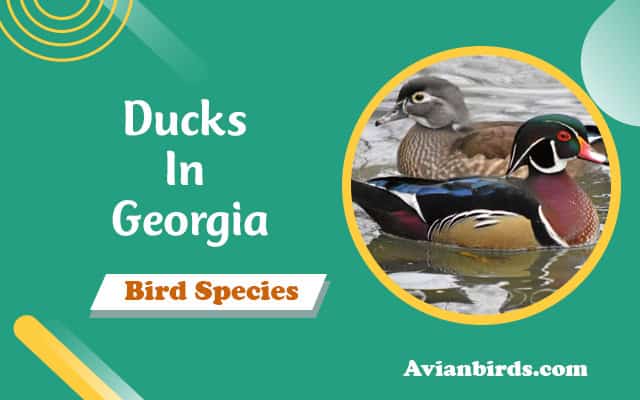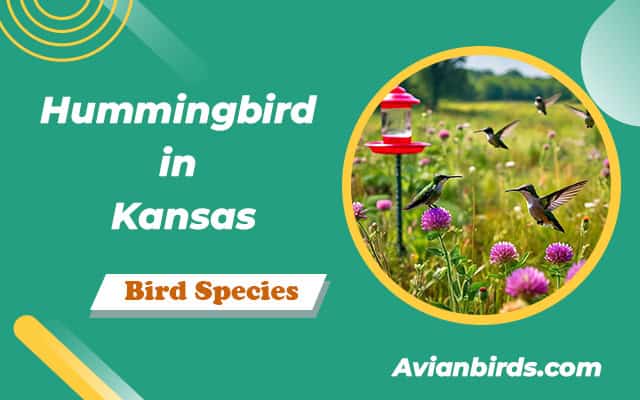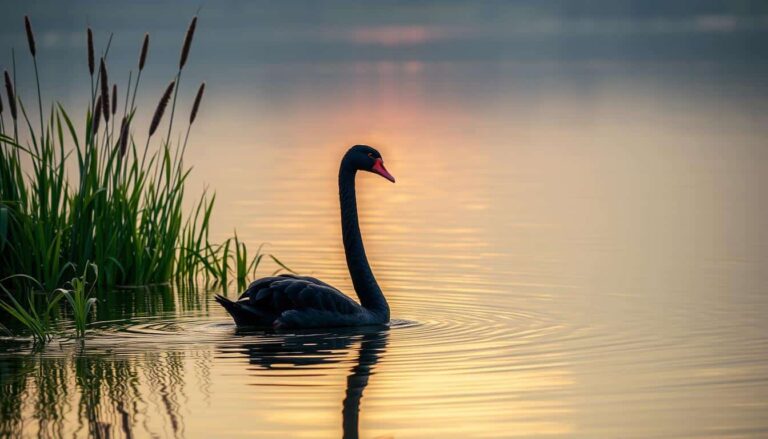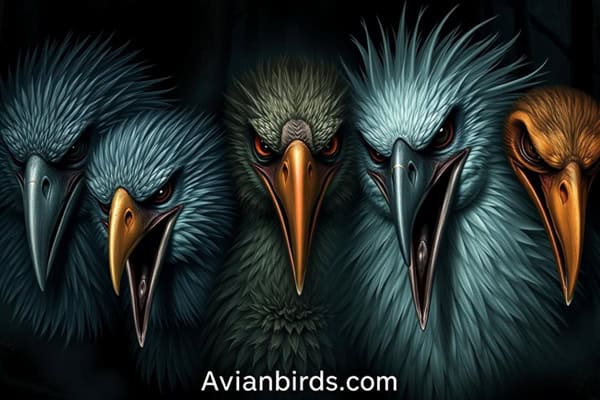21 Types of Ducks Found in Georgia! (With Pictures)
Did you know over 20 different ducks live in Georgia? This variety makes our wetlands lively and draws nature lovers and bird watchers from everywhere.
In this article, we’ll explore the world of ducks in Georgia and introduce you to 24 unique duck species found in our water areas.
The Wood Duck is known for its bright colours, and the hooded merganser is elegant. Georgia’s plants and animals make perfect homes for these ducks.
If you love birds or just want to know about Georgia’s ducks, this guide is for you. It offers key facts, traits, and stunning pictures to help you spot each species. Let’s discover the amazing ducks of Georgia together!
Introduction to Ducks in Georgia
Georgia is a great place for bird lovers and nature fans. It has many ducks from different places. These ducks live in wetlands, where they find food and shelter.
Ducks in Georgia come from far away. They migrate from the northeast and Canada. In winter, they rest and eat in Georgia’s wetlands.
Georgia has over 24 types of ducks, including dabbling, diving, and sea ducks. Each type has special ways to find food and lives in different places.
We work hard to keep their homes safe. The M.A.R.S.H. The program helps protect their habitats in the prairie pothole region, ensuring a stable environment for breeding. This way, we help ducks and keep Georgia’s nature beautiful.
Understanding Duck Types: Dabbling Ducks
Dabbling ducks are a special group of waterfowl. They are known for how they eat. Unlike diving ducks, dabbling ducks tip forward in shallow water to eat plants and insects.
Their broad bills help them filter food from the surface. This makes them great foragers in many places.
Characteristics of Dabbling Ducks
Dabbling ducks have bright colours, especially in males. They live in places like marshes, lakes, and rivers. They have:
- Feeding behaviour: Tipping forward to reach food in shallow water.
- Bill shape: Broad and flat, ideal for filtering food.
- Colouration: Males often exhibit bright and diverse colours.
Common Species of Dabbling Ducks in Georgia
In Georgia, we see many dabbling ducks. Each one is special in its own way. They have different looks and ways of eating:
| Species | Average Size (inches) | Notable Features |
|---|---|---|
| Mallard | 23 | White neck ring, violet-blue speculum bordered by black and white. |
| Wood Duck | 18.5 | Iridescent green and purple crested head. |
| American Wigeon | 20 | Black-speckled russet-red neck. |
| Green-winged Teal | 15.5 | Distinctive green wing patch. |
| Blue-winged Teal | 15.5 | Slate grey head in males, brownish-grey in females. |
| Gadwall | N/A | Gray-brown with a white belly and black rump. |
These ducks are key to Georgia’s ecosystems. They help during migration and breeding, and knowing about them helps us protect their homes.
Common Dabbling Ducks Found in Georgia
Dabbling ducks are key to Georgia’s wetlands and ecosystems. We find many duck species in different water places. From small puddles to big lakes, these ducks live in places that help them survive. Let’s look at some common dabbling ducks in Georgia.
1. Mallard
- Scientific Name: Anas platyrhynchos
- Size: 20 to 26 inches (51 to 66 cm)
- Weight: 2 to 3.5 pounds (0.9 to 1.6 kg)
- Lifespan: 5 to 10 years
- Diet: Omnivorous (aquatic plants, seeds, insects, small fish)
The Mallard is a famous duck in Georgia, often seen by waterfowl hunters. It has a green head and a bright yellow bill. You can see them in cities and countryside. They live near water and nest in plants, helping the ecosystem.

2. Wood Duck
- Scientific Name: Aix sponsa
- Size: 18 to 21 inches (46 to 53 cm)
- Weight: 1.5 to 3.2 pounds (0.7 to 1.5 kg)
- Lifespan: 3 to 15 years
- Diet: Omnivorous (seeds, fruits, insects, and aquatic plants)
The Wood Duck is known for its bright colours and nest in tree holes. It is found in wooded swamps in Georgia. The duck eats seeds, fruits, and insects, showing that it can adapt well.
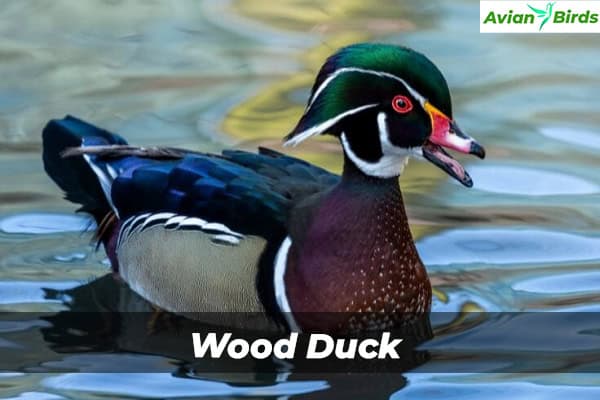
3. American Wigeon
- Scientific Name: Mareca americana
- Size: 18 to 22 inches (46 to 56 cm)
- Weight: 1.5 to 3.5 pounds (0.7 to 1.6 kg)
- Lifespan: 5 to 10 years
- Diet: Omnivorous (aquatic plants, seeds, and some insects)
The American Wigeon has a round head and bright feathers. It likes quiet lakes and marshes. Its light foreheads are called “baldpates.” The wigeon eats in shallow water, helping the wetlands.

4. Green-winged Teal
- Scientific Name: Anas crecca
- Size: 13 to 15 inches (33 to 38 cm)
- Weight: 0.7 to 1.4 pounds (0.3 to 0.6 kg)
- Lifespan: 2 to 5 years, though some can live longer
- Diet: Omnivorous (aquatic plants, seeds, and invertebrates)
The Green-winged Teal is the smallest dabbling duck. It has a green wing patch. They eat seeds and live in wetlands. Their fast flying is beautiful to watch.
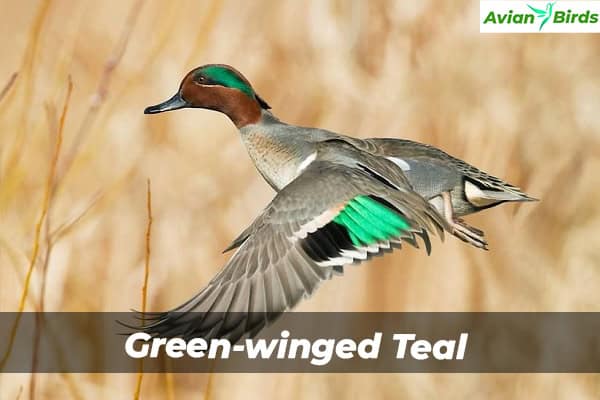
5. Blue-winged Teal
- Scientific Name: Anas discors
- Size: 14 to 16 inches (36 to 41 cm)
- Weight: 0.8 to 1.5 pounds (0.4 to 0.7 kg)
- Lifespan: 2 to 6 years, with some living longer
- Diet: Omnivorous (seeds, aquatic plants, and small invertebrates)
The Blue-winged Teal has a blue shoulder patch when flying. They like shallow wetlands with lots of plants. Their presence adds to Georgia’s wetland life.

6. Gadwall
- Scientific Name: Mareca strepera
- Size: 19 to 23 inches (48 to 58 cm)
- Weight: 2 to 3.5 pounds (0.9 to 1.6 kg)
- Lifespan: 5 to 10 years
- Diet: Omnivorous (aquatic plants, seeds, and invertebrates)
The Gadwall has simple feathers but is important in wetlands. They eat plants and insects. Their quiet beauty helps keep wetlands healthy.
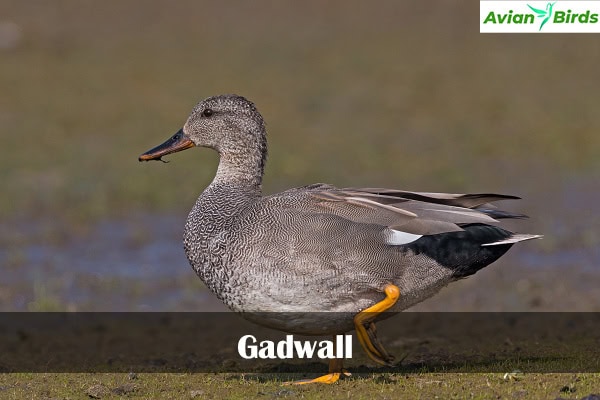
7. Northern Pintail
- Scientific Name: Anas acuta
- Size: 24 to 30 inches (61 to 76 cm)
- Weight: 2 to 3.5 pounds (0.9 to 1.6 kg)
- Lifespan: 5 to 10 years
- Diet: Omnivorous (seeds, grains, aquatic plants, and invertebrates)
The northern pintail has a long neck and pointed tail. It likes grassy areas near water and helps protect wetlands by choosing specific breeding places.

8. Northern Shoveler
- Scientific Name: Anas clypeata
- Size: 19 to 24 inches (48 to 61 cm)
- Weight: 2 to 3.5 pounds (0.9 to 1.6 kg)
- Lifespan: 5 to 10 years
- Diet: Omnivorous (aquatic plants, seeds, and small invertebrates)
The Northern Shoveler has a special bill for filtering food. They feed in groups in wetlands. They need these places for nesting and finding food.

9. American Black Duck
- Scientific Name: Anas rubripes
- Size: 54–59 cm (21–23 in)
- Weight: 720–1,550 g (1.6–3.4 lbs)
- Lifespan: 2–6 years (up to 20 years)
- Diet: Omnivorous (aquatic plants, seeds, insects, small fish)
The American Black Duck, with dark feathers, lives in eastern North America’s wetlands. It is sensitive to changes in its home and shows how the wetlands are doing.
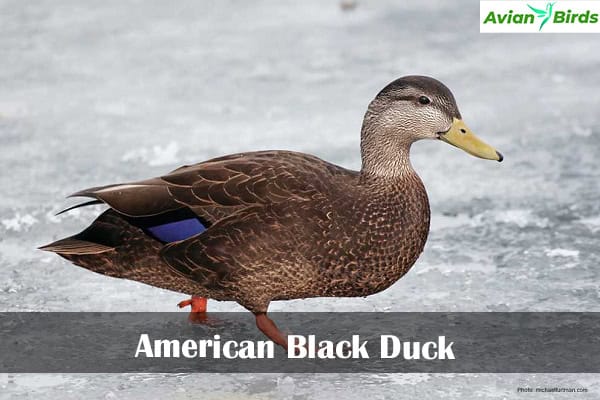
| Duck Species | Distinctive Features | Habitat | Diet |
|---|---|---|---|
| Mallard | Green head, yellow bill | Wetlands, urban areas | Omnivorous |
| Wood Duck | Iridescent plumage | Wooded swamps | Seeds, fruits, insects |
| American Wigeon | Round head, light-coloured forehead | Little lakes, marshes | Vegetation plays a crucial role in supporting the breeding grounds for various ducks., seeds |
| Green-winged Teal | Green wing patch | Wetlands | Seeds |
| Blue-winged Teal | Blue shoulder patch | Shallow wetlands | Dabbling, grazing |
| Gadwall | Subdued plumage | Wetlands | Aquatic vegetation, insects |
| Northern Pintail | Long neck, pointed tail | Grassy areas, wetlands | Vegetation |
| Northern Shoveler | Spatula-shaped bill | Wetlands | Filtration feeders |
| American Black Duck | Dark plumage | Wetlands | Omnivorous |
Exploring Diving Ducks in Georgia
Diving ducks are a key part of Georgia’s bird life. They live in water, hunting for food under the surface. Their special ways help their homes stay healthy.
Characteristics of Diving Ducks
Diving ducks are built for life underwater. They have sleek bodies and small wings that allow them to move quickly, allowing them to dive deep to find food.
Their unique way of eating helps keep water places healthy, benefiting both ducks that feed and other aquatic life. This is different from other ducks.
Common Species of Diving Ducks Found in Georgia
In Georgia, we see many diving ducks. Each one is important for our wetlands. Here are some you might see:
| Common Name | Habitat | Feeding Behavior |
|---|---|---|
| Lesser Scaup | Open waters in Georgia attract numerous species of ducks, including those with gray bodies and white plumage. | Dives for invertebrates and plant matter |
| Ring-necked Duck | Freshwater lakes and ponds | Forages for seeds and aquatic plants |
| Redhead | Lakes and marshes | Dives for aquatic vegetation and invertebrates |
| The Canvasback is a striking duck known for its distinctive white patch. | Shallow wetlands | Searches for submerged plants and invertebrates |
Learning about these ducks helps us protect their homes. Places like Lake Seminole and Phinizy Swamp are key. We must keep them safe for the future.
Notable Diving Ducks in Georgia
In Georgia, we see many diving duck species that make our water areas rich. These ducks dive deep to find food, showing us how amazing nature is. Let’s look at some diving ducks we often see in our state.
10. Lesser Scaup
- Scientific Name: Aythya affinis
- Size: 38–48 cm (15–19 in)
- Weight: 454–1,089 g (1–2.4 lbs)
- Lifespan: 10–15 years
- Diet: Primarily carnivorous (mollusks, insects, crustaceans)
The Lesser Scaup is very common in North America. It comes to Georgia during migration, where waterfowl hunters often seek it out. The Lesser Scaup dives deep to find food, and its black and white feathers make it easy to spot.

11. Ring-necked Duck
- Scientific Name: Aythya collaris
- Size: 39–46 cm (15–18 in)
- Weight: 490–910 g (1.1–2 lbs)
- Lifespan: 6–10 years
- Diet: Omnivorous (aquatic plants, seeds, mollusks, insects)
The Ring-necked Duck has a special ring around its neck. It comes to Georgia with the seasons. It dives in freshwater to find plants and bugs. Moreover, it migrates from September to December and again from February to March.
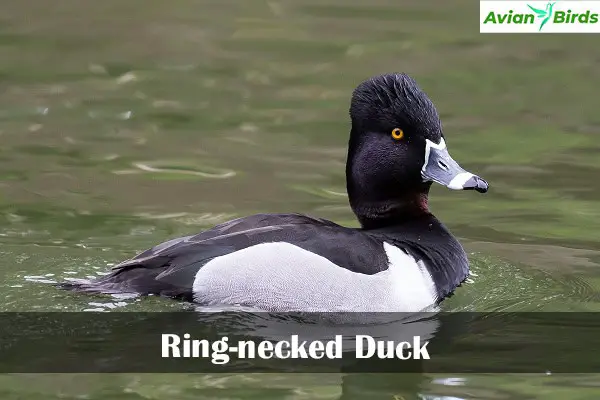
12. Ruddy Duck
- Scientific Name: Oxyura jamaicensis
- Size: 33–41 cm (13–16 in)
- Weight: 315–795 g (0.7–1.75 lbs)
- Lifespan: 2–5 years (up to 13 years)
- Diet: Omnivorous (mainly aquatic invertebrates, insects, and some aquatic plants)
The Ruddy Duck has a bright blue bill. They are fun to see in Georgia’s marshes. They eat insects and small fish, and their colours brighten up our areas.
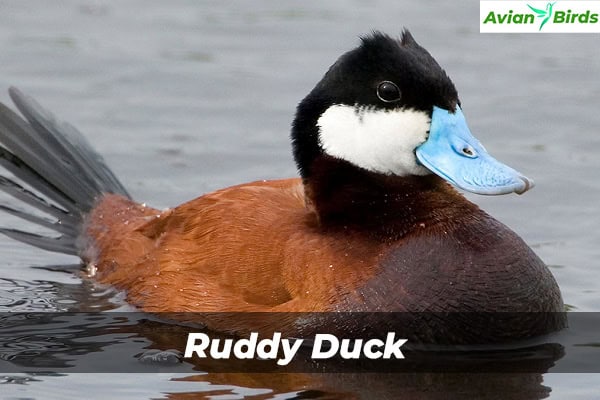
13. Canvasback
- Scientific Name: Aythya valisineria
- Size: 48–56 cm (19–22 in)
- Weight: 862–1,600 g (1.9–3.5 lbs)
- Lifespan: 10–18 years
- Diet: Primarily herbivorous (aquatic plants, seeds), but also eats mollusks and insects.
The Canvasback is the biggest diving duck in North America. It can grow up to 22 inches long, making it one of the notable species among the 24 ducks found in the area. The canvasback eats plants in Georgia’s waters, and its looks are stunning.

14. Mottled Duck
- Scientific Name: Anas fulvigula
- Size: 51–61 cm (20–24 in)
- Weight: 800–1,500 g (1.8–3.3 lbs)
- Lifespan: 5–8 years (up to 13 years)
- Diet: Omnivorous (aquatic plants, seeds, small fish, insects, and crustaceans)
The Mottled Duck has brown feathers. It looks like a female Mallard but is different. It lives in wetlands, eating food from dense plants, which include aquatic invertebrates.
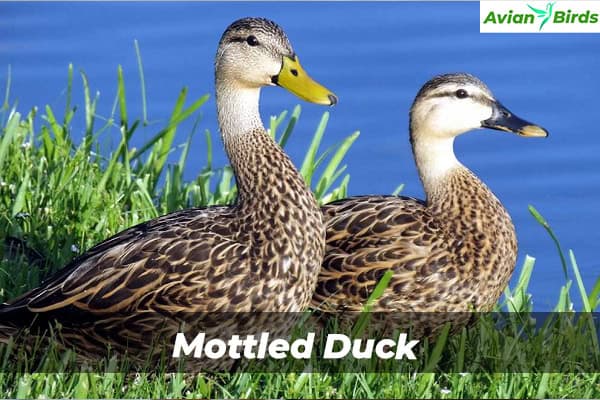
Must read: Black Ducks in Michigan
15. Redhead
- Scientific Name: Aythya americana
- Size: 37–54 cm (15–21 in)
- Weight: 725–1,600 g (1.6–3.5 lbs)
- Lifespan: 10–15 years
- Diet: Omnivorous (aquatic plants, seeds, mollusks, and small invertebrates)
The Redhead has a bright reddish-brown head. It glides on Georgia’s lakes and ponds. Its diving behaviour is fascinating, and its looks are beautiful.
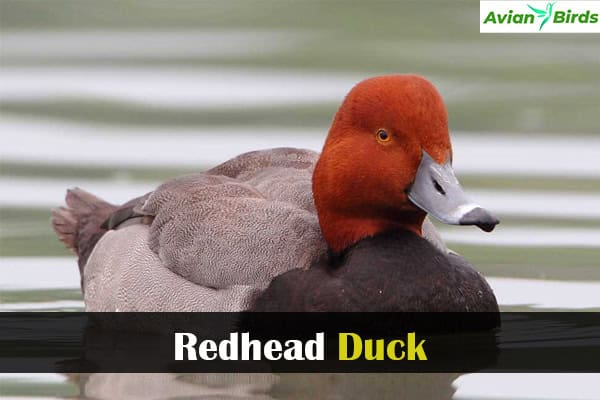
16. Greater Scaup
- Scientific Name: Aythya marila
- Size: 39–56 cm (15–22 in)
- Weight: 726–1,450 g (1.6–3.2 lbs)
- Lifespan: 10–15 years
- Diet: Primarily carnivorous (mollusks, crustaceans, insects)
The Greater Scaup is big and strong. It visits Georgia’s deep waters during migration. Its colors are striking, and it helps our water habitats by eating food.
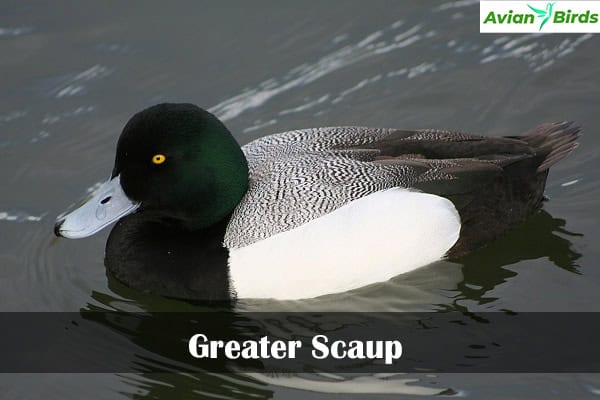
| Diving Duck Species | Size | Diet | Habitat |
|---|---|---|---|
| Lesser Scaup | Medium | Invertebrates | Freshwater |
| Ring-necked Duck | Medium | Submerged plants | Freshwater marshes |
| Ruddy Duck | Small | Aquatic insects | Marshes |
| Canvasback | Large | Aquatic vegetation | Wetlands |
| Mottled Duck | Medium | Plants, insects | Freshwater marshes |
| Redhead | Medium | Plants, small fish | Lakes, ponds |
| Greater Scaup | Large | Invertebrates | Deep waters |
Sea Ducks: An Introduction
Georgia’s duck population includes an interesting group called sea ducks. These birds live in coastal areas and have special diving skills. These skills help them find food like shellfish and crustaceans underwater. Knowing about these birds helps us understand their place in our ecosystems.
Characteristics of Sea Ducks
Sea ducks have strong bodies and special features for diving. They are different from other diving ducks because they live in harsher coastal areas. Their pointed wings help them move fast underwater. They also have thick feathers to keep warm in cold water.
Common Sea Ducks in Georgia
In Georgia, we see many types of sea ducks that make our coastal areas beautiful, including the coot. Some of these include migratory birds, ducks that feed on vegetation, and the whistle of a calling goose.
- Common Goldeneye – It has striking features and swims well.
- Surf Scoter – It’s known for its bright colours and loves cold water.
- Hooded Merganser – The male has a unique crest and dives well.
These sea ducks in Georgia show how diverse our coastal areas are, contributing to the richness of aquatic invertebrates. They make our shores look great and show our marine environments are healthy. Taking care of these birds and their homes is key to keeping our ecosystem balanced.
Identifying Sea Ducks in Georgia
Many sea duck species live in Georgia’s coastal waters. Knowing their traits makes birdwatching more fun. Let’s look at some sea ducks that live in our waters.
17. Common Goldeneye
- Scientific Name: Bucephala clangula
- Size: 40–51 cm (16–20 in)
- Weight: 500–1,300 g (1.1–2.9 lbs)
- Lifespan: 10–15 years
- Diet: Primarily carnivorous (aquatic invertebrates, fish, mollusks)
The Common Goldeneye has a bright yellow eye and different colours. It lives in coastal waters and estuaries. It dives deep to find food, making it a joy to watch.
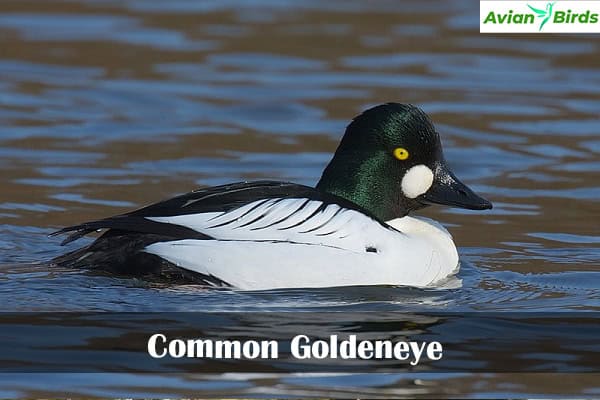
18. Surf Scoter
- Scientific Name: Melanitta perspicillata
- Size: 45–60 cm (18–24 in)
- Weight: 800–1,800 g (1.8–4.0 lbs)
- Lifespan: 10–15 years
- Diet: Primarily carnivorous (bivalves, crustaceans, and aquatic invertebrates)
The Surf Scoter has a colourful bill. It lives in the sea and dives deep to eat, and its unique look and behavior make it exciting to see.
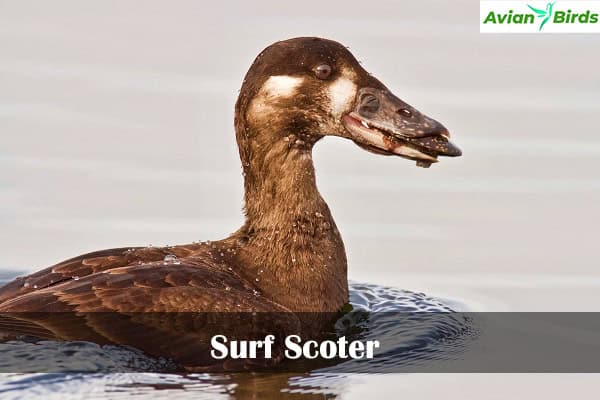
19. Hooded Merganser
- Scientific Name: Lophodytes cucullatus
- Size: 33–41 cm (13–16 in)
- Weight: 450–1,200 g (1–2.6 lbs)
- Lifespan: 10–15 years
- Diet: Primarily carnivorous (small fish, crustaceans, and aquatic invertebrates)
The Hooded Merganser has a special crest. It lives in ponds and marshes, hunts fish and invertebrates, and shows off its agility.

20. Red-breasted Merganser
- Scientific Name: Mergus serrator
- Size: 61–76 cm (24–30 in)
- Weight: 900–1,400 g (2–3.1 lbs)
- Lifespan: 5–10 years
- Diet: Primarily carnivorous (small fish, crustaceans, and other aquatic invertebrates)
The Red-breasted Merganser has a long body and a red breast. It lives in coastal waters and lakes. It dives for fish, showing its skill in the water.
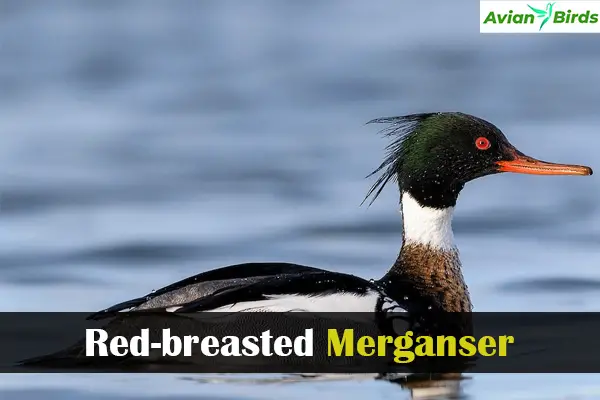
Related: Ducks Found In Florida
21. Black Scoter
- Scientific Name: Melanitta americana
- Size: 43–60 cm (17–24 in)
- Weight: 700–1,800 g (1.5–4.0 lbs)
- Lifespan: 10–15 years
- Diet: Primarily carnivorous (bivalves, crustaceans, and aquatic invertebrates)
The Black Scoter is all black. It lives by the coast, dives for food, and migrates in big groups, making it a sight to see.
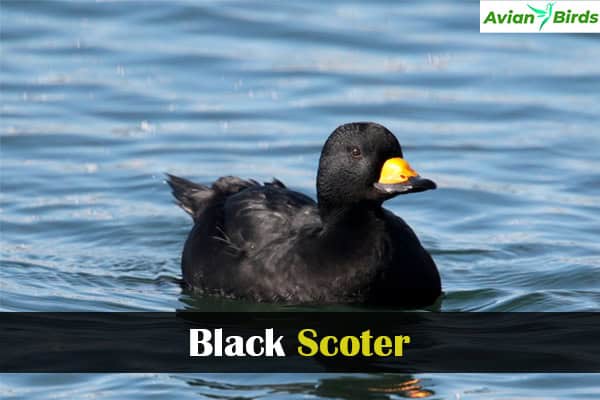
| Duck Species | Distinctive Feature | Habitat | Diving Habits |
|---|---|---|---|
| Common Goldeneye | Striking yellow eye | Coastal waters, estuaries | Dives for food at significant depths |
| Surf Scoter | Colorful bill | Marine environments | Deep dives for mollusks and crustaceans |
| Hooded Merganser | Unique crest | Freshwater ponds, marshes | Dives for fish and invertebrates |
| Red-breasted Merganser | Long, slender appearance | Coastal waters, lakes | Dives primarily for fish |
| Black Scoter | All-black plumage | Coastal regions | Strong diving for crustaceans |
Migratory Patterns of Ducks in Georgia
Learning about ducks’ migration in Georgia helps us see their seasonal changes. Many ducks move south in winter for warmer weather and more food, and their migration shows how they adapt to the seasons.
Seasonal Migration Overview
Ducks in Georgia have amazing migration habits. They come from the north in the fall, seeking better weather and food. Their migration peaks in late winter and early spring as they head back to breed.
Habitat Preferences During Migration
Ducks prefer certain places during their travels. Marshes, wetlands, and lakes are key stops for rest and food. These places help ducks survive their long journeys.
| Habitat Type varies from marshes to lakes, providing essential breeding grounds for various waterfowl. | Characteristics | Species Commonly Found |
|---|---|---|
| Marshes | Shallow waters with rich plant life | Wood Ducks, Northern Pintails |
| Wetlands | Seasonally flooded areas supporting diverse flora | American Black Ducks, Gadwalls |
| Lakes | Open water with varied depths provides foraging opportunities | Common Goldeneyes, Canvasbacks |
| Coastal Areas | Tidal zones with abundant food sources | Red-breasted Mergansers, Surf Scoters |
The Importance of Ducks in Georgia’s Ecosystem
Ducks in Georgia are very important for our ecosystems. They help keep wetlands healthy. Their actions are key to the survival of many species.
Learning about the good ducks do helps us protect wetlands. These areas are vital for our environment.
Role of Ducks in Wetland Conservation
Ducks are vital to wetlands. They help by eating food that keeps wetlands rich, supporting the ecosystem for waterfowl hunting. This is good for the plants and animals that live there.
By eating and nesting, ducks help plants grow, keeping the wetlands stable. This is important for the whole ecosystem.
Impact of Ducks on Local Biodiversity
Ducks improve the environment for other animals, including migratory birds that rely on healthy ecosystems. They eat seeds, insects, and plants, which helps control the numbers of other species.
Over 10,000 ducklings are born in Georgia every year, helping to keep the wildlife diverse. Protecting ducks is important for our wetlands and wildlife.
Conclusion
Ducks in Georgia show us how important wetlands are. They help us understand birds and the health of our planet. Each duck type tells us about the state of our ecosystems.
These birds are not just fun to watch; like ducks, they contribute to the balance of their habitats. They also help us see how nature is connected. Their ways of living and travelling teach us a lot.
Protecting their homes is key to keeping our planet diverse. We must keep our ecosystems healthy. This way, future generations can enjoy the beauty of ducks and their habitats.
We can help by supporting conservation and learning about ducks. By doing this, we protect ducks and their homes in Georgia.
Let’s work together to save our natural places. We should teach others and be careful around wildlife. This way, ducks will always be a part of Georgia’s natural beauty.
Read More🐦Related Articles:
| Can Ducks Eat Cucumber Safely |
| Owls in Ohio |
| Eagles in Florida |
| Eagles Found in Virginia! |
| Hawks in Colorado |
Frequently Asked Questions
Q1. What is the most common duck in Georgia?
The most common duck in Georgia is the Mallard (Anas platyrhynchos). Other frequently seen species include the Wood Duck, Gadwall, and Northern Pintail.
Q2. Do ducks migrate to Georgia?
Yes, many ducks migrate to Georgia, especially during the winter months. The state serves as an important stopover and wintering area for various migratory waterfowl, including Mallards and other species.
Q3. Is Georgia good for duck hunting?
Yes, Georgia is considered a great state for duck hunting. Its diverse wetland habitats, including lakes, rivers, and marshes, provide excellent opportunities for hunting various duck species during the migration season.
Q4. Where to hunt ducks in Georgia?
Some popular areas for duck hunting in Georgia include:
- Lake Seminole: Known for its vast water and abundant duck populations.
- Okefenokee Swamp: Offers rich habitats and diverse wildlife.
- Altamaha River: Provides excellent hunting grounds along its banks.
- Georgia Department of Natural Resources (DNR) Wildlife Management Areas: Various WMAs across the state offer designated hunting areas for waterfowl.

